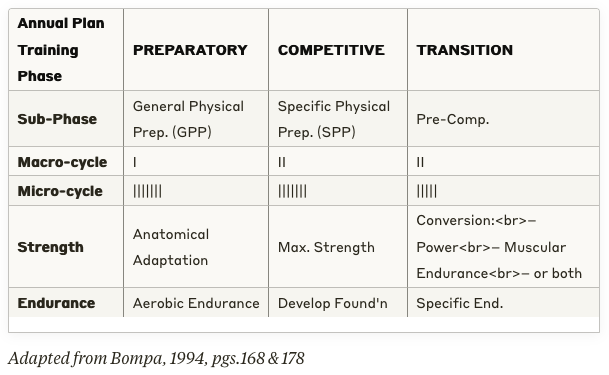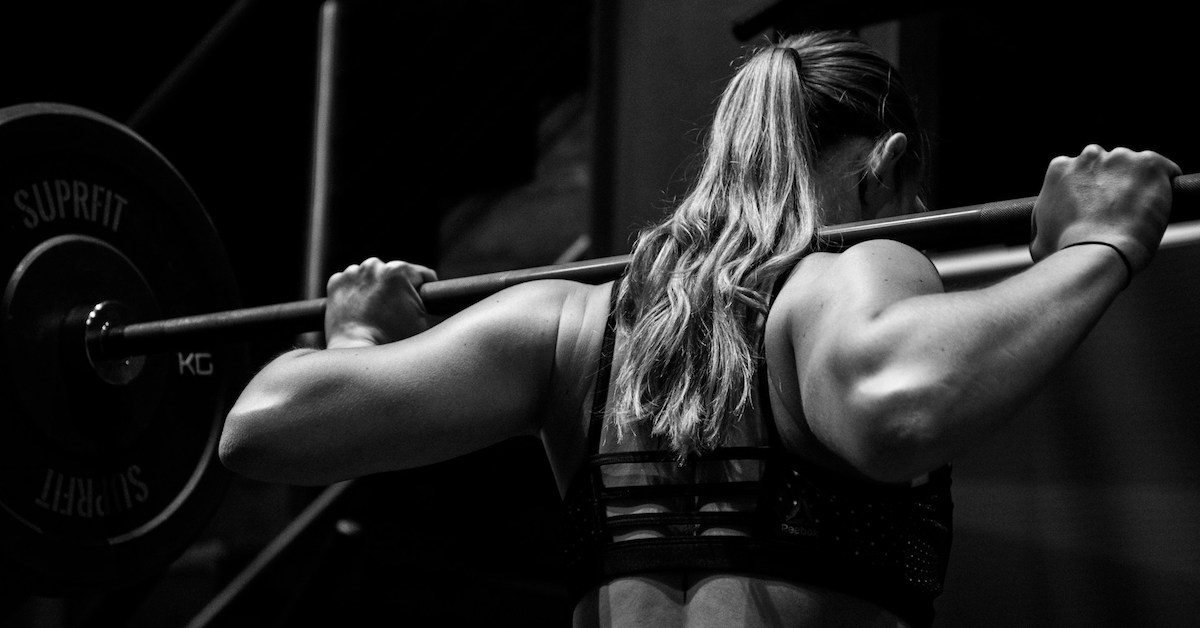If there’s one constant in strength training, it’s variety. Those who vary their programs will often make consistent progress. What’s common in most programs, however, is a lack of variety!
Most trainees do the same thing over and over, not only between routines but also within them. They perform the same exercises and set/rep schemes; rest for the same length of time; train the same body part(s) on the same day; use the same loads; train on the same equipment; use the same workout gear, etc. They’re basically doing the same program for an extended period of time. Such redundancy will eventually lead to stagnation.
The line “spinning your wheels but getting nowhere fast” applies here, as does the famous Einstein quote: “Insanity defined is doing the same thing over and over and expecting different results.” You can’t make long-term progress training in the same manner. It just won’t happen.
Another woeful trend involves super-long workouts. You know, those two-hour plus marathon sessions people perform on a regular basis. This is a wonderful way to deplete energy stores and hamper recovery, as well as induce a catabolic state while playing havoc on your immune system. Again, how can you make any real progress?
Of course, you can get too much of a good thing as well. Olympic strength coach and T-Nation contributor, Charles Poliquin, is known to say: “A program is only as good as the time it takes to adapt to it!” This is true. If you change your routine every week, you may not give enough time for your body to adapt to that set of stimuli. Some advanced trainees will benefit from this approach, but most won’t.
Coach Ian King states that beginners will generally make progress on a program for 6-8 weeks, intermediates 4-6 weeks, and advanced 1-4 weeks. Now, let’s take a closer look at how we’d organize training parameters within this framework.
Listen To Your Body. It Doesn’t Lie!
We’ll use my favorite subject: myself. I generally adapt to a program in four workouts (not necessarily four weeks, mind you.) Usually, after four workouts of the same program, I fail to make progress and I get bored! This is a definite sign that it’s time to change.
Listen to your body! If you’re bored, it’s akin to your nervous system shouting, “Hey buddy, I’m ready for a new challenge. Been there, done that. It’s time to move on!” So oblige.
In general, the rate of adaptation determines the length of a program, and it differs among individuals as well as phases. For example, a program may last 5-6 workouts with submaximal loads (i.e. accumulation phase) but only 3-4 with maximal loads (i.e. intensification phase) or vice versa.
To determine the duration of a program, one must make progress (either 1-2% increase in load or a 1-2 rep increase) each workout. This varies among individuals where beginners will make progress for a longer period of time versus advanced trainees who will stagnate much earlier as mentioned above.
Gung Ho = Burnt Out
Next, how do we load to make continual progress? I can’t tell you how many clients I’ve had who’ve gone gung ho on the first or second workout and then burnt out. They basically shot their load (so to speak) and had nothing left afterward. They were a little premature in the loading department and hit a brick wall. And this is when injuries happen.
Let’s use the four workout example again to demonstrate an efficient approach. The first workout is used to find the appropriate load and isn’t taken to failure. For instance, if you plan to perform the classic 5 x 5 set/rep scheme, then the first four sets can be considered as warm-ups ramping up to your final set, which is about two reps shy of failure. Use a weight that’s 2-4% heavier for all five sets the following workout.
The object in the second workout is to achieve 25 total reps (the last set or two may be tough). In other words, you strive for volume in this workout.
The third session is where intensity comes into play. Start with a load that’s again 2-4% more than the previous workout, and each set increase the weight by about 2%. (PlateMates may come in handy here.) The reps will most likely drop to three by the last set (depending on your fiber makeup), but use forced reps when necessary to complete five reps on all five sets.
In the fourth and final workout, you taper by dropping 40% of the volume in terms of sets but not the load. The total workload will actually remain similar to the previous workout because this session will be performed at a faster tempo and thus more repetitions can be achieved with the same weight.
The unloading effect coupled with the perception of achieving more with the same weight (i.e. being successful) will increase Testosterone and improve recovery, allowing you to make continual progress where most people are burnt out at the end of a routine and have nothing left for the next one.
Here’s an example of how this approach would look:
Workout 1
5 x 200 (piece of cake throughout)
5 x 210
5 x 220
5 x 230
5 x 240
2 reps in the hole (work up to a 7RM load)
5-0-X-0 Tempo
Total Number of Reps: 25
Average Load: 220
Total Workload: 5500
Workout 2
5 x 250 (fairly easy)
5 x 250
5 x 250
5 x 250
5 x 250 (still fairly easy)
1 rep in the hole (6RM load)
5-0-X-0 Tempo
Total Number of Reps: 25
Average Load: 250
Total Workload: 6250
Workout 3
5 x 260 (not bad)
5 x 265 (this was a max effort)
5 x 270 (tough)
5 x 275 (Mother of God)
5 x 280 (Mother, Grandmother, and any other relative of God!)
Go to failure (1-2 forced reps may be necessary to complete all 5 reps)
5-0-X-0 Tempo
Total Number of Reps: 25
Average Load: 270
Total Workload: 6750
Workout 4
8 x 280 (feel good)
8 x 280 (feel strong)
8 x 280 (ready for a new program!)
Speed up tempo (will increase number of reps completed) and decrease number of sets by 40%
2-0-X-0 Tempo
Total Number of Reps: 24
Average Load: 280
Total Workload: 6720
Use microloading in the form of PlateMates when necessary.
*On the third workout, you can use forced reps if you have a spotter. Do as many as you can on your own and then squeeze out an additional rep or two until you reach five. Rest-pause or cluster training (i.e. resting 10-15 seconds between reps) is an option if you’re training alone.
**Notice how volume in terms of total number of sets remains relatively constant throughout even though the number of sets is reduced by 40% in the fourth workout. Although the workload drops slightly in the final workout, the average load (i.e. intensity) is actually up. This is all accomplished by speeding up the eccentric (negative) action from five seconds to 1-2 seconds, which for some people can actually double the number of reps performed.
In this routine, the parameters of reps, sets, load, and tempo have all been manipulated in a gradual, systematic manner to ensure continual progress.
Conjugation To The Maximum
“If you fail to plan, you plan to fail!”
You hear that all the time, and it holds true even in our little strength world. However, keep in mind that you don’t need to plan too far in advance because many things will change. An injury, for example, can make some serious alterations to your plan!
Periodization (or phase training) is simply a way to organize or plan your training. Let’s look at a classic model.

I was fortunate to have Tudor Bompa as a professor during my undergrad at York University in the early nineties. Considered the man responsible for introducing periodization to North America, Bompa has written many books on the subject.
As Istvan Balyi points out, Bompa’s model outlined in the chart above differs somewhat from the original Matveyev model — Bompa doesn’t use the term “mesocycle.” The original Matveyev (1972) model differs from Bompa (1985) model in that the annual plan is divided into microcycle (days), mesocycle (weeks), and macrocycle (months.)
Lifting maximal loads for a chronic period of time can cause athletes to “burn out” due to the high motivational level needed. Zatsiorsky characterizes the staleness syndrome by the following:
- Decreased vigor
- Elevated anxiety and depression
- Sensation of fatigue in the morning hours
- Increased perception of effort while lifting a fixed weight
- High resting blood pressure (Zatsiorsky, 1995, pg. 101)
Chek further outlines the signs and symptoms of overtraining by dividing them into psychological and physiological symptoms (Chek, 1999, pg. 64):
Psychological
- Irritability
- Antisocialism
- Lack of motivation
- Deviation from normal personality
- Loss of sex drive
Physical
- Elevated average morning heart rate
- Increased warm-up time required
- Accumulation of nagging injuries
- Prolonged recovery from injury
- Drop in body weight
- Diminished appetite
- Poor performance
- Erratic performance
- Sleepy
- Poor sleep quality
In general, the potential for overtraining is reduced by variation in volume and intensity.
Therefore, it’s important to periodize or vary intensities both within and among programs. Don’t train at a high level for too long.
A typical periodized approach among programs for athletes involves the following plan: END > HYP > STR > POW (endurance, hypertrophy, strength, and power).
As you move from one phase to the other, the attributes of the previous phase(s) begin to decay. A better approach is to train multiple qualities at one time. Also, it’s important to hit different angles/planes, grips and stances, intensities and thus rep brackets, bilateral vs. unilateral movements, sequences (i.e. order of exercises), etc., again both within and among programs. Keep the workouts short and sweet, and allow the body to recover.
Enough Already, Get To It!
Okay, let’s examine two routines from a great little book called The Development of Muscular Bulk & Power written by the late Anthony Ditillo. This book was originally published in 1971 and yet the information still holds true today.
Bulk & Power Routine #1
Monday
A) Full Squat, 10 sets x 3 reps
B) Parallel-Bar Dips, 5 x 5-7
C) Weighted Chin-Ups, 5 x 5-7
Wednesday
A) Deadlift, 10 x 3
B) Bent-Arm Flyes, 5 x 5-7
C) Barbell Curl, 5 x 5-7
Friday
A) Bench Press, 10 x 3
B) Half Squat, 5 x 5-7
C) Top Deadlift, 5 x 5-7
Program Notes:
- Use two minute rest intervals and add weight to the bar whenever possible.
- Use maximum weight for every set.
- Take a complete rest on Tuesday, Thursday, Saturday, and Sunday.
Here are some options to consider with the above-mentioned routine:
- Use a wide (snatch) grip for the deadlift on Wednesday and a clean grip for the top deadlift on Friday.
- Substitute a flat/incline/seated dumbbell press for the bent-arm flyes.
- Substitute a reverse curl for the barbell curl on Wednesday since you’re using a supinated grip for elbow flexion when performing chin-ups on Monday, or perform pull-ups (pronated grip) on Monday and barbell curl (supinated grip) on Wednesday.
- Use a wide stance for the half squat on Friday (obviously, a closer stance would be required for the full squat on Monday).
Bulk & Power Routine #2
Monday
A) Bench Press
B) Floor Press
C) Deadlift
D) High Deadlift
1 set of 5 reps for a warm-up and 5 singles using 90% 1RM
Tuesday
A) Seated Press
B) Half Press
C) Full Squat
D) Half Squat
1 set of 5 reps for a warm-up and 5 singles using 90% 1RM
Thursday
A) Bench Press
B) Deadlift
C) Curls
5 sets of 5-7 reps using maximum weight each set
Friday
A) Seated Press
B) Full Squat
C) Rowing
5 sets of 5-7 reps using maximum weight each set
Again, rest two minutes between sets and add weight whenever possible. Ditillo claimed this was the best routine he came across for increasing bulk and power simultaneously. And who can argue with that?
He did a nice job of using the big bang, multi-joint, compound, spleen-busting exercises (well, except for curls which you can easily substitute chins — sorry, I just had to add my two cents!), hitting the body from different angles, and utilizing two different set/rep schemes to favor strength and size gains.
My Size and Strength Routine
I’ve utilized concepts from both these programs to formulate the following size and strength routine:
Monday
A1) Front Squat
A2) Wide-Grip Pull-Ups
B1) Dumbbell Split Squat (front foot elevated)
B2) Incline Dumbbell Press (neutral)
Tuesday
A1) Snatch-Grip Deadlift
A2) Parallel-Bar Dips
B1) Dumbbell Step-Ups
B2) One-Arm Dumbbell Row (neutral)
Thursday
A1) Wide-Stance Back Squat
A2) Close-Grip Chin-Ups
B1) Front Split Squat (rear foot elevated)
B2) Flat Dumbbell Press (neutral)
Friday
A1) Sumo-Style Deadlift
A2) Close-Grip Bench Press
B1) Standing Good Morning
B2) Seated Dumbbell Press (neutral)
“A” Exercises: 6 x 2-4 @ 40X0, 120 seconds
“B” Exercises: 4 x 6-8 @ 30X0, 90 seconds
Notice the structure of the routine. The first two exercises potentiate the next two. In other words, by using heavier weights on the initial pair of exercises, you tap into high threshold fibers and through the process of post-tetanic potentiation, post-tetanic facilitation, post-activation (or whatever the hell you wish to call this phenomenon!), you’ll be stronger (i.e. greater loads can be achieved) on the next pair of exercises.
Next, consider the sequence. By coupling lower body with upper body movements, it’ll allow for longer rest intervals and greater recovery between sets.
This is a conjugate system that trains various motor qualities simultaneously. It covers all three methods of maximal (the “A” exercises), dynamic (all concentric actions are performed explosively) and repeated (the “B” exercises) efforts that are necessary to build strength according to Vladimir Zatsiorsky.
Furthermore, all exercises can be performed in a simple weight room — no special equipment is necessary. There’s a fairly even volume of pushing and pulling movements for both the upper and lower body. The body is hit in multiple planes, and different grips and stances are used throughout.
Conclusion
So what’s the secret to size and strength? Well, you don’t need fancy equipment, nor any silly, so-called “functional” exercises with insignificant weight, and a complicated set/rep/split/periodization scheme is also unnecessary — just simple, big bang exercises and plenty of hard work is all that’s required.
Pick your poison, either three exercises, three times a week, or up to four exercises, four times a week, and then go and get yourself big and strong! Stick to a simple gym with basic exercises, use conjugated periodization, and vary your routine once you adapt to make continuous progress.
References
- Zatsiorsky, VM. Science and Practice of Strength Training. Champaign, IL: Human Kinetics, 1995.
- Balyi, I. Part Six: Long Term Athlete Development Model Macrocycle and Macrocycle Planning of the Annual Plan. Strength and Conditioning Coach: Vol. 5, No. 3, 1998.
- Bompa, TO. Theory and Methodology of Training: The Key to Athletic Performance 3rd Edition. Dubuque, IA: Kendall/Hunt Publishing Company, 1994.
- Chek, P. Advanced Program Design Correspondence Course. C.H.E.K. Institute, 1999.
- Ditillo, A. The Development of Muscular Bulk & Power. Ironman Magazine, 1971. Reprinted in 1999 by Wm F. Hinbern, Farmington, MI. (page 138-139)
- King, I. Get Buffed. Australia: King Sports Publishing, 2000.
- Siff, MC, Verkhoshansky, YV. Supertraining 4th Edition. Denver, CO: Supertraining International, 1999.

Stretching Smarter: The Do’s and Don’ts for Maximum Flexibility
By JP CatanzaroOriginally published: September 23, 2014 – Updated for 2025 Want to boost flexibility, prevent injuries, and optimize performance?

Training Economy: How Weight Training Can Be Your All-in-One Fitness Solution
Recent research has once again confirmed what many in the weightlifting community already know: weight training isn’t just for building

4 Invaluable Lessons from Strength Training Pioneer Arthur Jones
Arthur Jones, a true visionary in the realm of strength training, left an unforgettable mark on the fitness industry with
follow
Error: No feed with the ID 2 found.
Please go to the Instagram Feed settings page to create a feed.
